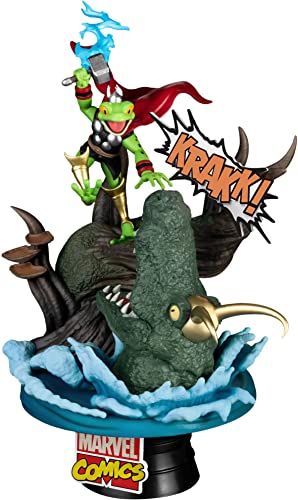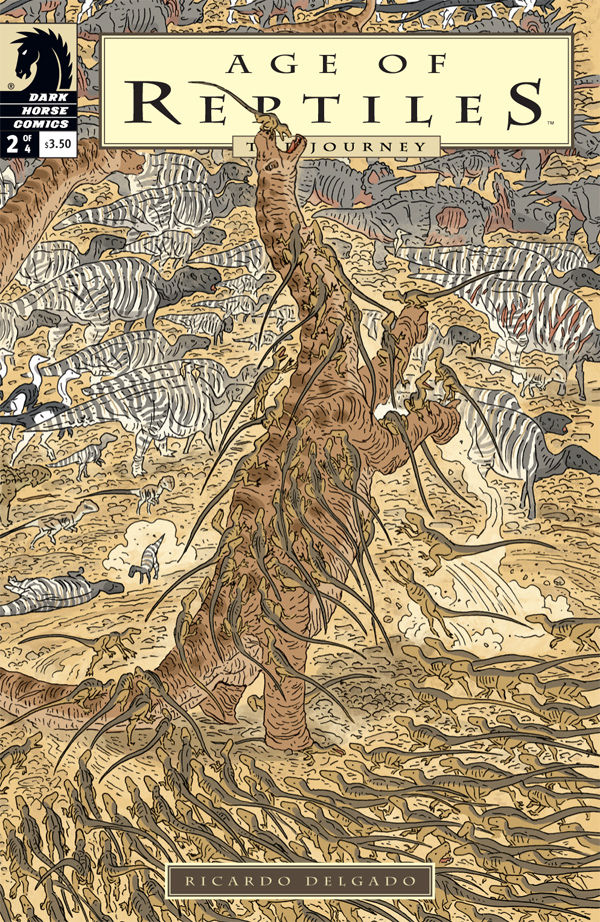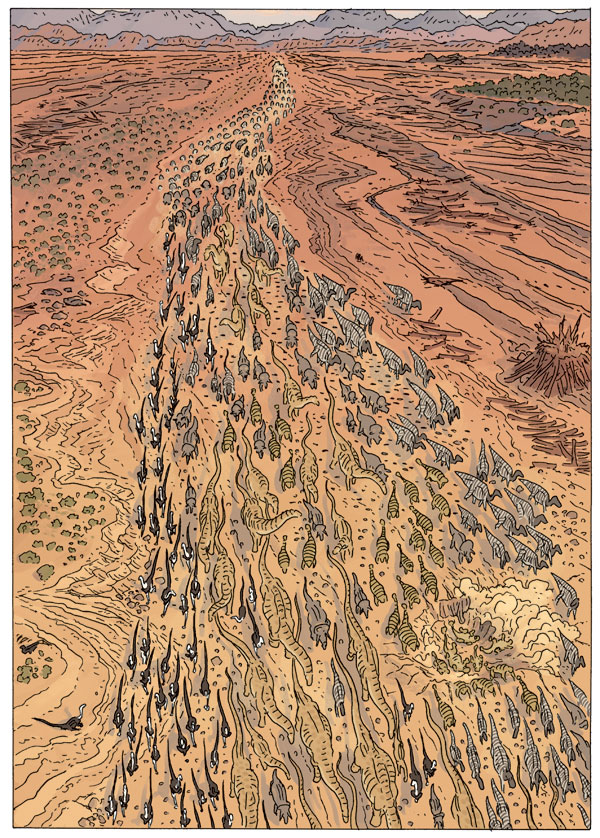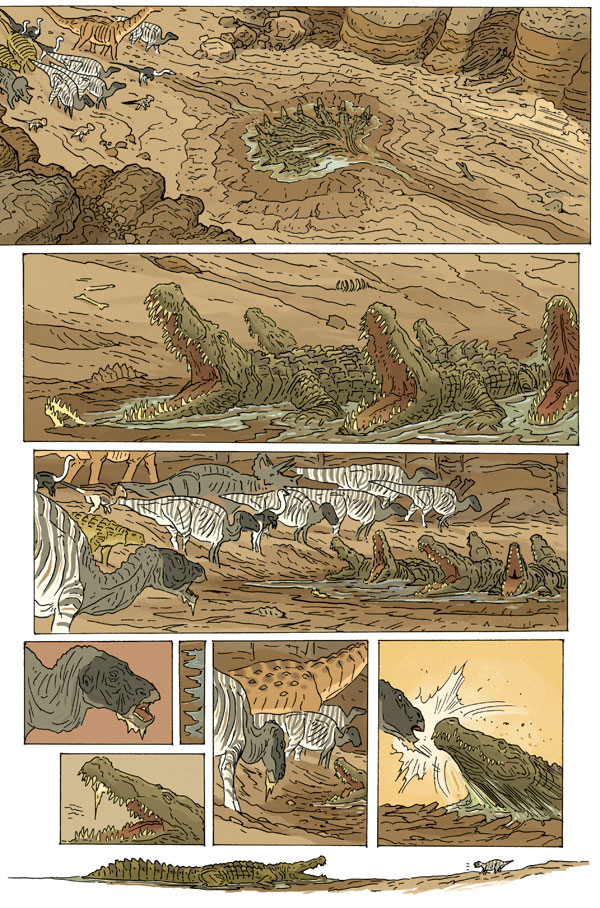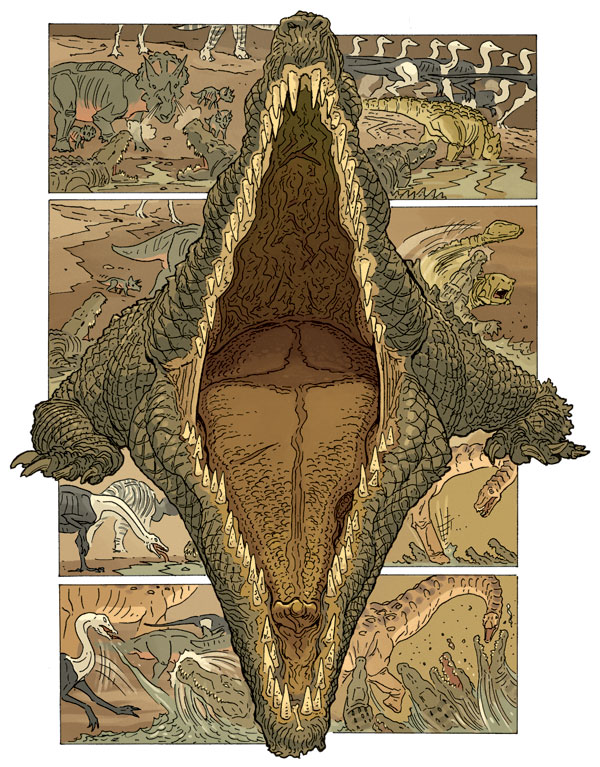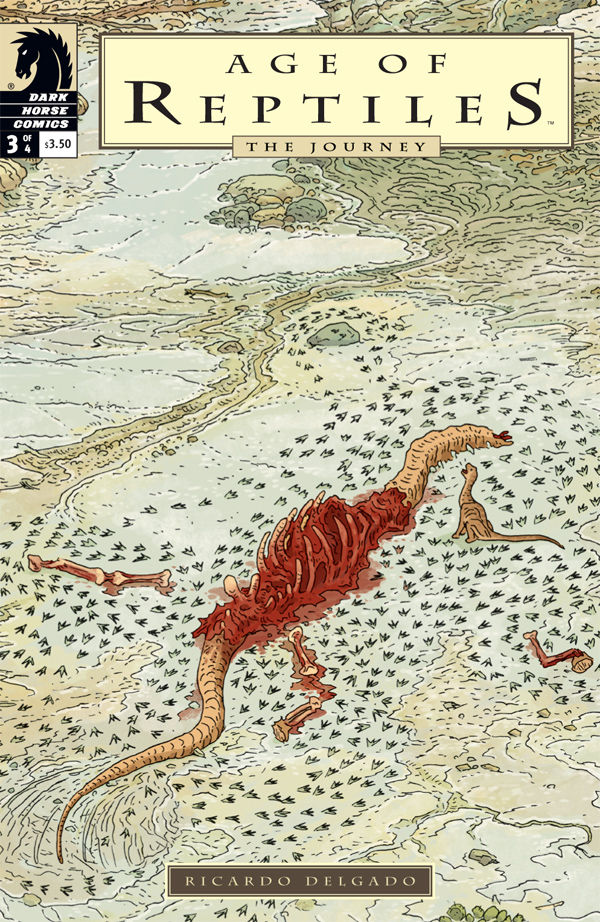Age of Reptiles: The Journey
Issue #1 of 4 Review
*****SPOILERS INCLUDED BELOW*****
It feels so very good to be transported back to the Age of Reptiles once again! We fans of the AoR series have been waiting and hoping for years that Delgado would bless us with another book, and our prayers have been answered! The most epic in scale and easily accessible of the series, Delgado unfolds a superb tale which unites dinosaurs from all walks of life.
Going back in this thread, you will find the preview shots posted from the Dark Horse website, and initially there was a bit of confusion as to what the "odd substance" was which was covering the ground in the first few pages. It is indeed ice/frost covering the dinosaurs, and the color in the book reflects as much (more translucent and blue on the pages of the comic as opposed to the tan color in the preview). Also, as often happens, the first
previewed pages are not the
actual first pages in the book. The first several frames show amphibians frozen in ponds and streams, insects trapped in ice upon tree branches, and many dinosaurs and flying reptiles seeing their breath in the morning cold for perhaps the first time.
The massive herd of herbivores is rendered
beautifully by Delgado. The sauropods link tails and necks upon each other, loosely forming a ring around their young; Triceratops act similarly with their horns facing outward; Ankylosaurs hunker down in a small group, etc. It's a very intriguing take on how these animals might have behaved when collected gregariously. Even while taking in the details of all of the massive and minute herbivores - their individual scars, the folds in their skin - the surrounding environment will also draw the eye of the reader. Seeing small lizards, snakes, and rodents scurry about dust mounds after food or in search of shelter served as nice reminders that there is a great measure of other life which will be impacted by the climate change aside from just the dinosaurs.
The herbivores travel together in a fashion quite similar to the great Serengeti migrations today. Their alliance for mutual protection via the "strength in numbers" philosophy, seems quite tenuous. There are interspecific and intraspecific quarrels throughout the story. Sauropods and Ankylosaurs bellow protests at one another; hadrosaurs circle in a mob to watch two of their own quarrel; Triceratops knock each other down embankments to reach better foraging ground; and dinosaurs of every species are tossed about and trampled within the herd as it trudges ever onward. The world is gritty and dangerous, as Delgado is quick to remind us with an unfortunate hadrosaur, deserted not only by the herd but its family, and subsequently devoured by a trio of dromaeosaurs which had been anxiously awaiting such an opportunity. This takes me to the story's carnivores.
The killing of the hadrosaur does not seem nearly as brutal as it does hauntingly peaceful. The gore is subdued and revealed at a distance as the hadrosaur lies down its head and is cut open by the starving raptors. The descriptive adjective I used there is intentional - these are
starving animals. Our sympathies are not limited to only the herbivores. The most dramatic moment in the issue is when an infant Triceratops wanders away from the herd to eat a plump piece of fruit freshly fallen from a tree. As it sits to enjoy the succulent meal, a Tyrannosaurus rex literally dives from the forest in an effort to snatch the vulnerable infant. While in flight from the immense carnivore, the infant is saved by its altruistic mother who hurls herself between the T.rex and her child. When confronted not only by the enraged mother Triceratops, but by the other Triceratops herd members as well, the T.rex turns to retreat into the forest. Following this, we see the T.rex stalk to a cliffside where she is greeted by her own two infants, and it becomes apparent that her attempted depredation was executed to sate not only her own appetite, but that of her children. The T.rex family sits and observes the herd like a group of lions surveying gazelles from afar.
Whether carnivore or herbivore, every animal in this story is fighting for its life. The dinosaurs do not intentionally seek out battles for dominance or vengeance, but are compelled to act out of the most basic of instincts - the will to survive. Issue #2 can't come soon enough!
















